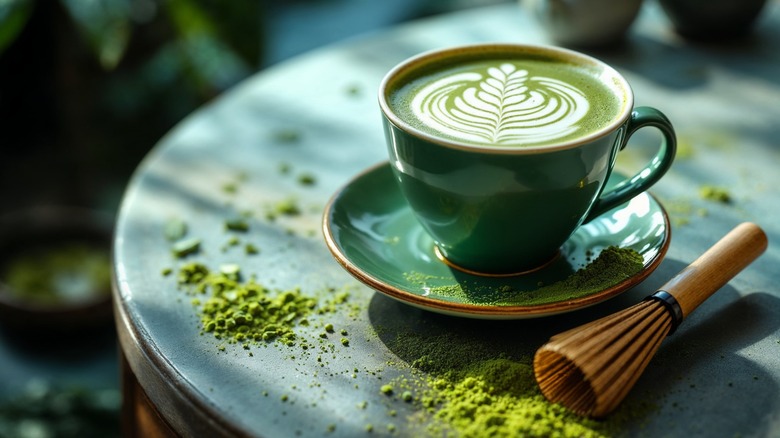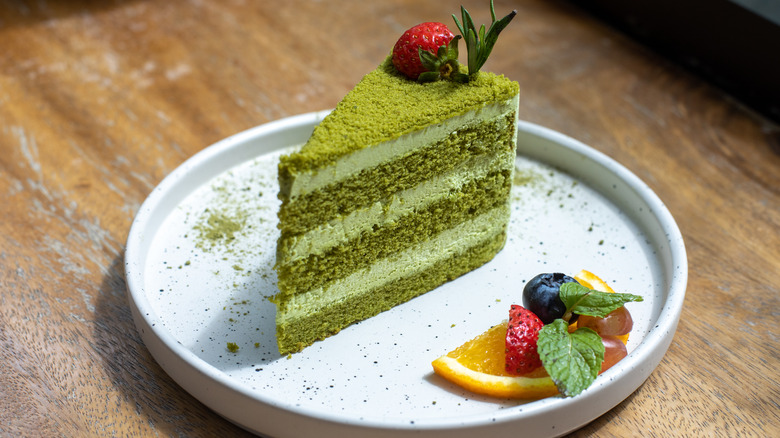Expect To Pay More For Your Matcha Soon (If You Can Find It)
Matcha's popularity has soared in recent years as the Japanese tea powder has become a trendy ingredient in drinks and food. The trend has been driven by social media influencers enamored in part by its bright green color. But its price is set to rise and it may soon be harder to find as demand is outpacing supply. The recently-imposed U.S. tariffs may also affect its price for American consumers (to be fair, all authentic matcha powder is produced in Japan, so its impact won't be as severe as if it were made in China).
Although matcha is being produced at record levels, Japan is still struggling to keep up with demand because of the time-consuming, labor-intensive process of making it. Tencha leaves are hand-picked only a few days in early spring before being dried and ground. Different tencha leaves are then combined to create varying flavors. Currently, it's mostly smaller, family-run farms that are responsible for making much of the matcha. Japan is trying to encourage more farmers to produce it with subsidies and other programs, but industry experts warn that Japan is reaching its matcha production limit.
Another price wrinkle was thrown in when a 24% tariff on goods from Japan was threatened to be imposed by the United States as part of the recent global tariff bout by the Trump administration. The tariffs have been paused for 90 days, however a 10% tariff remains on many countries which could impact matcha's price if Japan is listed among them. With Trump's global trade negotiations unfolding at such a breakneck speed, it's difficult to say what to expect.
How is matcha consumed?
Matcha's complex flavor is described as having grassy, umami, sweet, and bitter elements. It's traditionally been brewed as a tea in Japan, where it's also used as a part of cultural and religious tea ceremonies. But its soaring demand both abroad and in Japan has come from consuming it in other ways.
A particularly popular use is in coffee drinks like lattes and frappuccinos (Starbucks uses real matcha in its lattes). Matcha is packed with antioxidants and contains caffeine, so some people are using it to replace their morning coffee. It has less caffeine than coffee and is released slower, so the energy boost lasts longer without as many jitters.
Matcha can also spruce up cold drinks like lemonade, smoothies, and cocktails and can be used in food, particularly baked goods. As it's gained popularity, people have discovered more creative ways too, like giving popcorn a vibrant upgrade. If you enjoy making matcha lattes at home, make sure to use the right amount for the perfect flavor.

